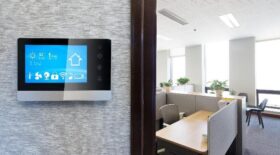During the post-pandemic period, many companies are facing the question of choosing an operating model for their future – should they transition to remote work altogether, offer flexible hybrid solutions, or invite all employees to return to the office? In the case of the last two options, considering the motivation of employees is important. Which factors would encourage people to return to the office part-time or completely?

Undoubtedly, in-person meetings and shared lunches and coffee breaks facilitate open discussions and foster new ideas and solutions, but employees also invest their time, energy, and money in this. It is likely that the days of trying to develop company culture through bean bag chairs, ping-pong tables, or pizza lunches in the meeting room are almost over. The main concern for employees is the daily commute to work and the associated time and financial costs, while the previous years have proven that you can complete your tasks from home. An environment created for work that is conducive to the development of company culture is set apart from a home office by the fact that it is a well-planned space for increasing productivity that is convenient for concentrating and completing daily tasks as efficiently as possible.
Here, a high-quality working environment and the indoor climate play a big role. According to a study conducted by Harvard University in 2015, people who work in sustainable, eco-friendly, and well-ventilated offices demonstrated a 101% improvement in brain and cognitive functions. Another study conducted in 2011 showed that a high-quality indoor climate increases the work performance of staff by 8%. When converting it into working hours, we learn that in work premises with a great indoor climate, an employee would have more than 3 extra hours every week for additional tasks, self-improvement, or other important responsibilities.
How to create a pleasant and healthy working environment that promotes productivity?
Sustainable energy efficiency technologies help to make the indoor climate and environment of a building comfortable for its users and promote their well-being.
You should start by bringing in fresh air through the ventilation system and ensuring great air quality indoors. A comfortable air temperature can be provided by passive solutions or with the help of efficient building management and monitoring systems, which monitor the frequency of use of rooms and regulate the operation of the ventilation accordingly. Such smart solutions help to save on energy costs associated with heating and ventilation. Over the last few years, we have also seen how excellent ventilation helps to prevent the spread of viruses and widespread outbreaks of illnesses among the staff, which could significantly impair business continuity.
On work premises, natural light should be used as much as possible because it would help to cut the costs of lighting. Researchers at the American Academy of Sleep Medicine have determined that people who work on premises with windows sleep an average of 46 minutes more at nights. A better quality of sleep ensures higher productivity at work.
Acoustics and proper sound insulation are important for focus, recovery, and ensuring productivity.
In the exterior and interior finish of a building and its daily maintenance, you should avoid materials and chemicals that cause harmful or toxic waste that could have a negative impact on human health. This is mainly a problem for older buildings.
When taking into account both the improvement in productivity and the potential savings from the upkeep of an efficient ventilation system, it is possible to state with absolute certainty that investing in a good indoor climate leads to significant financial savings for employers. By implementing other energy efficiency principles as well, a company can reduce the consumption of energy and its environmental footprint as well as administrative costs even further. If your objective is creating a pleasant working environment, you should also consider the efficient consumption of water, energy, and other resources, options for producing renewable energy, and recycling because an increasing number of people who participate in the labour market value sustainable thinking.
If you would like to increase the quality of the working environment and indoor climate or are interested in designing an energy-efficient building, feel free to contact us.
As a separate service, we can analyse the quality of indoor climate of buildings. In the course of the analysis, we measure the aforementioned parameters of the indoor climate and make suggestions for improvement.
You can read more about the service here.


